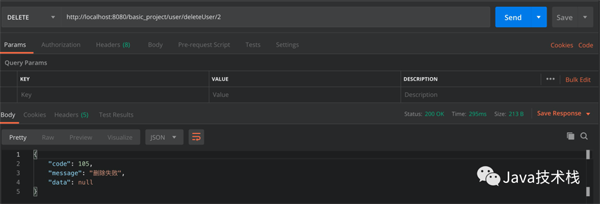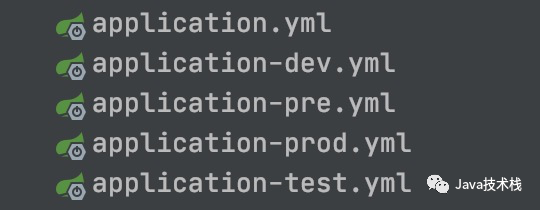前言
建立一个全新的项目,或者把旧的庞大的项目,进行拆分成多个项目。在建立新的项目中,经常需要做一些重复的工作,比如说拷贝一下常用的工具类,通用代码等等。
所以就可以做一个基础的项目方便使用,在经历新项目的时候,直接在基础项目上进行简单配置就可以开发业务代码了。
基础项目该包含哪些东西。
- Swagger在线接口文档。
- CodeGenerator 代码生成器。
- 统一返回。
- 通用的分页对象。
- 常用工具类。
- 全局异常拦截。
- 错误枚举。
- 自定义异常。
- 多环境配置文件。
- Maven多环境配置。
- 日志配置。
- JenkinsFile。
Swagger
写接口文档通常是一件比较头疼的事情,然而swagger就用是用来帮我们解决这个问题的。可以在线生成接口文档,并且可以在页面上进行测试。
可以非常清楚的显示,请求数据已经响应数据。当然这一切都需要在代码中进行配置。
「注意的点:接口文档只能在测试/开发环境开启,其他环境请关闭。」
常用的Swagger注解
- @Api用于Controller
- @ApiOperation用于Controller内的方法。
- @ApiResponses用于标识接口返回数据的类型。
- @ApiModel用于标识类的名称
- @ApiModelProperty用于标识属性的名称
案例
@RestController
@Api(tags = "用户")
@AllArgsConstructor
@RequestMapping("/user")
public class UserController {
private IUserService userService;
/**
* 获取用户列表
* @param listUserForm 表单数据
* @return 用户列表
*/
@ApiOperation("获取用户列表")
@GetMapping("/listUser")
@ApiResponses(
@ApiResponse(code = 200, message = "操作成功", response = UserVo.class)
)
public ResultVo listUser(@Validated ListUserForm listUserForm){
return ResultVoUtil.success(userService.listUser(listUserForm));
}
}
- 1.
- 2.
- 3.
- 4.
- 5.
- 6.
- 7.
- 8.
- 9.
- 10.
- 11.
- 12.
- 13.
- 14.
- 15.
- 16.
- 17.
- 18.
- 19.
- 20.
@Data
@ApiModel("获取用户列表需要的表单数据")
@EqualsAndHashCode(callSuper = false)
public class ListUserForm extends PageForm<ListUserForm> {
/**
* 用户状态
*/
@ApiModelProperty("用户状态")
@NotEmpty(message = "用户状态不能为空")
@Range(min = -1 , max = 1 , message = "用户状态有误")
private String status;
}
- 1.
- 2.
- 3.
- 4.
- 5.
- 6.
- 7.
- 8.
- 9.
- 10.
- 11.
- 12.
对应的swagger的配置可以查看基础项目内的SwaggerConfiguration.java.点击这里参考详细教程。关注公众号Java技术栈回复boot可以获取Spring Boot系列教程。
CodeGenerator代码生成器。
mybatis_plus代码生成器可以帮我们生成entity,service,serviceImpl,mapper,mapper.xml。省去了建立一大堆实体类的麻烦。没听过的可以点击这里参考这篇文章。
由于配置太长这里就不贴出来了,对应的CodeGenerator的配置可以查看基础项目内的CodeGenerator.java.
常用的封装
统一返回 ResultVo
将所有的接口的响应数据的格式进行统一。
@Data
@ApiModel("固定返回格式")
public class ResultVo {
/**
* 错误码
*/
@ApiModelProperty("错误码")
private Integer code;
/**
* 提示信息
*/
@ApiModelProperty("提示信息")
private String message;
/**
* 具体的内容
*/
@ApiModelProperty("响应数据")
private Object data;
}
- 1.
- 2.
- 3.
- 4.
- 5.
- 6.
- 7.
- 8.
- 9.
- 10.
- 11.
- 12.
- 13.
- 14.
- 15.
- 16.
- 17.
- 18.
- 19.
抽象表单 BaseForm
public abstract class BaseForm<T> {
/**
* 获取实例
* @return 返回实体类
*/
public abstract T buildEntity();
}
- 1.
- 2.
- 3.
- 4.
- 5.
- 6.
- 7.
有小伙伴可能有疑问了,这个类有啥用呢。先看一下,下面的代码。
/**
* 添加用户
* @param userForm 表单数据
* @return true 或者 false
*/
@Override
public boolean addUser(AddUserForm userForm) {
User user = new User();
user.setNickname(userForm.getNickname());
user.setBirthday(userForm.getBirthday());
user.setUsername(userForm.getUsername());
user.setPassword(userForm.getPassword());
return save(user);
}
- 1.
- 2.
- 3.
- 4.
- 5.
- 6.
- 7.
- 8.
- 9.
- 10.
- 11.
- 12.
- 13.
- 14.
重构一下,感觉清爽了一些。
/**
* 添加用户
* @param userForm 表单数据
* @return true 或者 false
*/
@Override
public boolean addUser(AddUserForm userForm) {
User user = new User();
BeanUtils.copyProperties(this,user);
return save(user);
}
- 1.
- 2.
- 3.
- 4.
- 5.
- 6.
- 7.
- 8.
- 9.
- 10.
- 11.
使用BaseForm进行重构 AddUserForm 继承 BaseForm并重写buildEntity
@Data
@EqualsAndHashCode(callSuper = false)
public class AddUserForm extends BaseForm<User> {
/**
* 昵称
*/
private String nickname;
/**
* 生日
*/
private Date birthday;
/**
* 用户名
*/
private String username;
/**
* 密码
*/
private String password;
/**
* 构造实体
* @return 实体对象
*/
@Override
public User buildEntity() {
User user = new User();
BeanUtils.copyProperties(this,user);
return user;
}
}
- 1.
- 2.
- 3.
- 4.
- 5.
- 6.
- 7.
- 8.
- 9.
- 10.
- 11.
- 12.
- 13.
- 14.
- 15.
- 16.
- 17.
- 18.
- 19.
- 20.
- 21.
- 22.
- 23.
- 24.
- 25.
- 26.
- 27.
- 28.
- 29.
- 30.
/**
* 添加用户
* @param userForm 表单数据
* @return true 或者 false
*/
@Override
public boolean addUser(AddUserForm userForm) {
return save(userForm.buildEntity());
}
- 1.
- 2.
- 3.
- 4.
- 5.
- 6.
- 7.
- 8.
- 9.
上面的代码有没有种似曾相识的感觉,很多情况都是将接受到的参数,转变成对应的实体类然后「保存」或者「更新」。
所以对于这类的form可以继承baseform并实现buildEntity()这样可以更加符合面向对象,service不需要关心form如何转变成entity,只需要在使用的时候调用buildEntity()即可,尤其是在form -> entity相对复杂的时候,这样做可以减少service内的代码。让代码逻辑看起来更加清晰。
通用的分页对象
涉及到查询的时候,绝大多数都需要用到分页,所以说封装分页对象就很有必要。可以注意下 PageForm.calcCurrent()、PageVo.setCurrentAndSize()、PageVo.setTotal()这个几个方法。
PageForm
@Data
@ApiModel(value = "分页数据", description = "分页需要的表单数据")
public class PageForm<T extends PageForm<?>>{
/**
* 页码
*/
@ApiModelProperty(value = "页码 从第一页开始 1")
@Min(value = 1, message = "页码输入有误")
private Integer current;
/**
* 每页显示的数量
*/
@ApiModelProperty(value = "每页显示的数量 范围在1~100")
@Range(min = 1, max = 100, message = "每页显示的数量输入有误")
private Integer size;
/**
* 计算当前页 ,方便mysql 进行分页查询
* @return 返回 pageForm
*/
@ApiModelProperty(hidden = true)
public T calcCurrent(){
current = (current - 1 ) * size;
return (T) this;
}
}
- 1.
- 2.
- 3.
- 4.
- 5.
- 6.
- 7.
- 8.
- 9.
- 10.
- 11.
- 12.
- 13.
- 14.
- 15.
- 16.
- 17.
- 18.
- 19.
- 20.
- 21.
- 22.
- 23.
- 24.
- 25.
PageVo
@Data
public class PageVo<T> {
/**
* 分页数据
*/
@ApiModelProperty(value = "分页数据")
private List<T> records;
/**
* 总条数
*/
@ApiModelProperty(value = "总条数")
private Integer total;
/**
* 总页数
*/
@ApiModelProperty(value = "总页数")
private Integer pages;
/**
* 当前页
*/
@ApiModelProperty(value = "当前页")
private Integer current;
/**
* 查询数量
*/
@ApiModelProperty(value = "查询数量")
private Integer size;
/**
* 设置当前页和每页显示的数量
* @param pageForm 分页表单
* @return 返回分页信息
*/
@ApiModelProperty(hidden = true)
public PageVo<T> setCurrentAndSize(PageForm<?> pageForm){
BeanUtils.copyProperties(pageForm,this);
return this;
}
/**
* 设置总记录数
* @param total 总记录数
*/
@ApiModelProperty(hidden = true)
public void setTotal(Integer total) {
this.total = total;
this.setPages(this.total % this.size > 0 ? this.total / this.size + 1 : this.total / this.size);
}
}
- 1.
- 2.
- 3.
- 4.
- 5.
- 6.
- 7.
- 8.
- 9.
- 10.
- 11.
- 12.
- 13.
- 14.
- 15.
- 16.
- 17.
- 18.
- 19.
- 20.
- 21.
- 22.
- 23.
- 24.
- 25.
- 26.
- 27.
- 28.
- 29.
- 30.
- 31.
- 32.
- 33.
- 34.
- 35.
- 36.
- 37.
- 38.
- 39.
- 40.
- 41.
- 42.
- 43.
- 44.
- 45.
- 46.
- 47.
案例
ListUserForm
@Data
@ApiModel("获取用户列表需要的表单数据")
@EqualsAndHashCode(callSuper = false)
public class ListUserForm extends PageForm<ListUserForm> {
/**
* 用户状态
*/
@ApiModelProperty("用户状态")
@NotEmpty(message = "用户状态不能为空")
@Range(min = -1 , max = 1 , message = "用户状态有误")
private String status;
}
- 1.
- 2.
- 3.
- 4.
- 5.
- 6.
- 7.
- 8.
- 9.
- 10.
- 11.
- 12.
UserServiceImpl
/**
* 获取用户列表
* @param listUserForm 表单数据
* @return 用户列表
*/
@Override
public PageVo<UserVo> listUser(ListUserForm listUserForm) {
PageVo<UserVo> pageVo = new PageVo<UserVo>().setCurrentAndSize(listUserForm);
pageVo.setTotal(countUser(listUserForm.getStatus()));
pageVo.setRecords(userMapper.listUser(listUserForm.calcCurrent()));
return pageVo;
}
/**
* 获取用户数量
* @param status 状态
* @return 用户数量
*/
private Integer countUser(String status){
return count(new QueryWrapper<User>().eq("status",status));
}
- 1.
- 2.
- 3.
- 4.
- 5.
- 6.
- 7.
- 8.
- 9.
- 10.
- 11.
- 12.
- 13.
- 14.
- 15.
- 16.
- 17.
- 18.
- 19.
- 20.
UserController
/**
* 获取用户列表
* @param listUserForm 表单数据
* @return 用户列表
*/
@ApiOperation("获取用户列表")
@GetMapping("/listUser")
@ApiResponses(
@ApiResponse(code = 200, message = "操作成功", response = UserVo.class)
)
public ResultVo listUser(@Validated ListUserForm listUserForm){
return ResultVoUtil.success(userService.listUser(listUserForm));
}
- 1.
- 2.
- 3.
- 4.
- 5.
- 6.
- 7.
- 8.
- 9.
- 10.
- 11.
- 12.
- 13.
注意的点
- PageVo在实例化的时候需要设置「当前页」和「每页显示的数量」 可以调用setCurrentAndSize()完成。
- 进行分页查询的时候,需要计算偏移量。listUserForm.calcCurrent()
为什么要计算偏移量呢?
- 假如查询第1页每页显示10条记录,前端传递过来的参数是current=1&&size=10,这个时候limit 1,10没有问题。
- 假如查询第2页每页显示10条记录,前端传递过来的参数是current=2&&size=10,这个时候limit 2,10就有问题,实际应该是limit 10,10。calcCurrent()的作用就是如此。
为什么不用MybatisPlus自带的分页插件呢?
❝ 自带的分页查询在大量数据下,会出现性能问题。 ❞
常用工具类
常用工具类可以根据自己的开发习惯引入。
推荐阅读:国人开源了一款小而全的 Java 工具类库
异常处理
异常处理的大致流程主要如下。
- 异常信息抛出 -> ControllerAdvice 进行捕获格式化输出内容
- 手动抛出CustomException并传入ReulstEnum ——> 进行捕获错误信息输出错误信息。
自定义异常
@Data
@EqualsAndHashCode(callSuper = false)
public class CustomException extends RuntimeException {
/**
* 状态码
*/
private final Integer code;
/**
* 方法名称
*/
private final String method;
/**
* 自定义异常
*
* @param resultEnum 返回枚举对象
* @param method 方法
*/
public CustomException(ResultEnum resultEnum, String method) {
super(resultEnum.getMsg());
this.code = resultEnum.getCode();
this.method = method;
}
/**
* @param code 状态码
* @param message 错误信息
* @param method 方法
*/
public CustomException(Integer code, String message, String method) {
super(message);
this.code = code;
this.method = method;
}
}
- 1.
- 2.
- 3.
- 4.
- 5.
- 6.
- 7.
- 8.
- 9.
- 10.
- 11.
- 12.
- 13.
- 14.
- 15.
- 16.
- 17.
- 18.
- 19.
- 20.
- 21.
- 22.
- 23.
- 24.
- 25.
- 26.
- 27.
- 28.
- 29.
- 30.
- 31.
- 32.
- 33.
错误信息枚举
根据业务进行添加。
@Getter
public enum ResultEnum {
/**
* 未知异常
*/
UNKNOWN_EXCEPTION(100, "未知异常"),
/**
* 添加失败
*/
ADD_ERROR(103, "添加失败"),
/**
* 更新失败
*/
UPDATE_ERROR(104, "更新失败"),
/**
* 删除失败
*/
DELETE_ERROR(105, "删除失败"),
/**
* 查找失败
*/
GET_ERROR(106, "查找失败"),
;
private Integer code;
private String msg;
ResultEnum(Integer code, String msg) {
this.code = code;
this.msg = msg;
}
/**
* 通过状态码获取枚举对象
* @param code 状态码
* @return 枚举对象
*/
public static ResultEnum getByCode(int code){
for (ResultEnum resultEnum : ResultEnum.values()) {
if(code == resultEnum.getCode()){
return resultEnum;
}
}
return null;
}
}
- 1.
- 2.
- 3.
- 4.
- 5.
- 6.
- 7.
- 8.
- 9.
- 10.
- 11.
- 12.
- 13.
- 14.
- 15.
- 16.
- 17.
- 18.
- 19.
- 20.
- 21.
- 22.
- 23.
- 24.
- 25.
- 26.
- 27.
- 28.
- 29.
- 30.
- 31.
- 32.
- 33.
- 34.
- 35.
- 36.
- 37.
- 38.
- 39.
- 40.
- 41.
- 42.
- 43.
全局异常拦截
全局异常拦截是使用@ControllerAdvice进行实现,常用的异常拦截配置可以查看 GlobalExceptionHandling。
@Slf4j
@RestControllerAdvice
public class GlobalExceptionHandling {
/**
* 自定义异常
*/
@ExceptionHandler(value = CustomException.class)
public ResultVo processException(CustomException e) {
log.error("位置:{} -> 错误信息:{}", e.getMethod() ,e.getLocalizedMessage());
return ResultVoUtil.error(Objects.requireNonNull(ResultEnum.getByCode(e.getCode())));
}
/**
* 通用异常
*/
@ResponseStatus(HttpStatus.OK)
@ExceptionHandler(Exception.class)
public ResultVo exception(Exception e) {
e.printStackTrace();
return ResultVoUtil.error(ResultEnum.UNKNOWN_EXCEPTION);
}
}
- 1.
- 2.
- 3.
- 4.
- 5.
- 6.
- 7.
- 8.
- 9.
- 10.
- 11.
- 12.
- 13.
- 14.
- 15.
- 16.
- 17.
- 18.
- 19.
- 20.
- 21.
案例
Controller
/**
* 删除用户
* @param id 用户编号
* @return 成功或者失败
*/
@ApiOperation("删除用户")
@DeleteMapping("/deleteUser/{id}")
public ResultVo deleteUser(@PathVariable("id") String id){
userService.deleteUser(id);
return ResultVoUtil.success();
}
- 1.
- 2.
- 3.
- 4.
- 5.
- 6.
- 7.
- 8.
- 9.
- 10.
- 11.
Service
/**
* 删除用户
* @param id id
*/
@Override
public void deleteUser(String id) {
// 如果删除失败抛出异常。 -- 演示而已不推荐这样干
if(!removeById(id)){
throw new CustomException(ResultEnum.DELETE_ERROR, MethodUtil.getLineInfo());
}
}
- 1.
- 2.
- 3.
- 4.
- 5.
- 6.
- 7.
- 8.
- 9.
- 10.
- 11.
结果
「将报错代码所在的文件第多少行都打印出来。方便排查。」
注意的点
所有手动抛出的错误信息,都应在错误信息枚举ResultEnum进行统一维护。不同的业务使用不同的错误码。方便在报错时进行分辨。快速定位问题。
多环境配置
SpringBoot多环境配置
对于一个项目来讲基本都4有个环境dev,test,pre,prod,对于SpringBoot项目多建立几个配置文件就可以了。
然后启动的时候可以通过配置spring.profiles.active 来选择启动的环境。这个详细教程请关注公众号Java技术栈回复boot获取系列教程。
java -jar BasicProject.jar --spring.profiles.active=prod
- 1.
Maven多环境配置
假如想在打包的时候动态指定环境,这个时候就需要借助Maven的xml来实现。这个请关注公众号Java技术栈回复mvn获取一份完整详细教程。
配置XML
<!-- 配置环境 -->
<profiles>
<profile>
<!-- 开发 -->
<id>dev</id>
<activation>
<activeByDefault>true</activeByDefault>
</activation>
<properties>
<activatedProperties>dev</activatedProperties>
</properties>
</profile>
<profile>
<!-- 测试 -->
<id>test</id>
<properties>
<activatedProperties>test</activatedProperties>
</properties>
</profile>
<profile>
<!-- 准生产 -->
<id>pre</id>
<properties>
<activatedProperties>pre</activatedProperties>
</properties>
</profile>
<profile>
<!-- 生产 -->
<id>prod</id>
<properties>
<activatedProperties>prod</activatedProperties>
</properties>
</profile>
</profiles>
- 1.
- 2.
- 3.
- 4.
- 5.
- 6.
- 7.
- 8.
- 9.
- 10.
- 11.
- 12.
- 13.
- 14.
- 15.
- 16.
- 17.
- 18.
- 19.
- 20.
- 21.
- 22.
- 23.
- 24.
- 25.
- 26.
- 27.
- 28.
- 29.
- 30.
- 31.
- 32.
- 33.
- 34.
更改application.yml
spring:
profiles:
# 选择环境
active: @activatedProperties@
- 1.
- 2.
- 3.
- 4.
使用案例
mvn clean package -P prod
mvn clean package -P pre
mvn clean package -P test
- 1.
- 2.
- 3.
打包完可以解压开查看application.yml 会发现spring.profiles.active=@activatedProperties@ 发生了改变。
日志配置
采用logback日志配置,点击这里参考这篇文章。
JenkinsFile
JenkinsFile肯定顾名思义是给jenkins用的。主要是配置项目根据如何进行构建并发布到不同的环境。需要去了解pipeline语法,以及如何配置jenkins。
结尾
如果觉得对你有帮助,可以随手点个在看哦,谢谢。











































